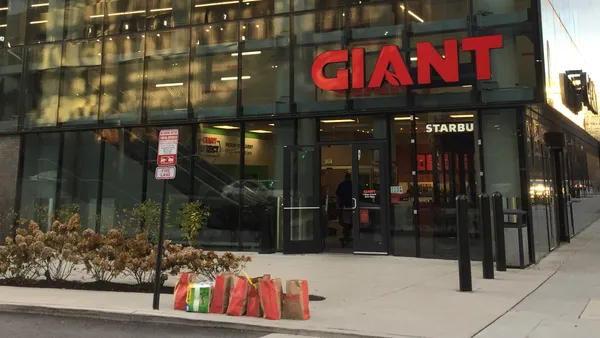In the ever-evolving world of retail, technology is transforming brick-and-mortar stores, reshaping the shopping experience for consumers and the operational strategies for retailers. As retailers begin to test different approaches to digitizing their stores, there are many considerations – none of which are more important than the impact to the customer experience, and resulting battle for loyalty and increased sales.
New consumer research commissioned by Vestcom in partnership with The Path to Purchase Institute reveals:
-
Reaction to the emergence of ESLs (electronic shelf labels)
-
Preferences around in-store digital screens
-
Impact of a more digitized environment
The report provides retailers and CPGs actionable insights to shape a holistic shopper-centric strategy that leverages technology to enhance, not detract from, the in-store experience and ultimately drive sales.
Consumers are receptive to in-store digital screens, when done right
Shoppers welcome digital screens when they are strategically placed and designed to inform and engage, with nearly half of shoppers attesting screens have a positive impact on their in-store experience.
Positioned correctly, in-store digital screens can be powerful vehicles that drive impulse purchases and introduce shoppers to new products. Even in its nascent stage of adoption, 1 in 4 shoppers report trying a new product or buying an unplanned item based on the influence of an in-store digital screen – skewing even higher among younger generations.

However, the nature of the digital content and placement of the screens themselves matters to maximize engagement and conversion.
|
|
Consumers value screens that display sales and promotional offers, as well as information that helps inform their purchase decisions. While screens are most commonly found today around checkout and the store entrance, shoppers are looking to engage with screens at intuitive points in their journey, including end cap displays and in-aisle at shelf. |
Well-integrated screens that deliver meaningful content at the right time and place have the power to drive engagement, loyalty, and sales.
ESLs impact shoppers' perception of price and value
The adoption of ESLs is driven by the promise of operational efficiency, reducing manual labor and unlocking the potential for dynamic pricing. However, retailers must consider the customer's perspective and sales impact when evaluating the total ROI of ESLs.
Research shows that the majority of shoppers (65%) do not have a strong preference between ESLs and traditional paper tags. Those who prefer ESLs appreciate the accurate pricing and clean look, while those who favor paper tags find it easier to identify sales, locate prices, and find products quickly. As retailers experiment with ESLs, they will need to pay close attention to promotional sales impact, particularly in categories that rely heavily on promotional activity.

Retailers should be mindful of ESLs’ impact on consumer perception of price and value. While nearly half of shoppers believe ESLs enable better value through real-time price adjustments, younger shoppers in particular express concerns about potential price gouging. Retailers may consider carefully addressing these concerns through proactive communication on the benefits of ESLs and reassurance around pricing policies.
A Holistic Approach with Vestcom
The transition to a more digitized store requires a balanced approach, strategically combining digital and print media to enhance the customer experience. With the debut of their new storeLink™ platform, Vestcom uniquely enables retailers to deploy a truly cohesive in-store strategy, optimizing this mix of digital and print vehicles to maximize total ROI.
Download the full report to unlock further insights, or visit www.vestcom.com to learn more and schedule a consultation with Vestcom’s team of experts.











